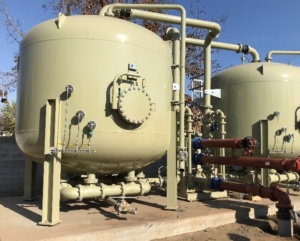PRESS RELEASE–The California State Auditor today released its final report on California Water Service Company’s (Cal Water) rates and operations in its Antelope Valley District. The audit, titled “Antelope Valley Water Rates: Various Factors Contribute to Differences Among Water Utilities” and approved by the Joint Legislative Audit Committee in August 2013, compared Cal Water’s rates and operations with three local municipal utilities, Los Angeles County Waterworks District No. 40, Palmdale Water District, and Quartz Hill Water District.
In its report, the state auditor found that Cal Water complied with all state rules requiring that rates be justified and warranted through the thorough process managed by the California Public Utilities Commission (Commission). According to the audit, unlike municipal utilities, regulated “utilities such as Cal Water… must justify their proposed rates by presenting cost information to the commission during general rate case proceedings, which take place every three years. The Commission… has broad authority over investor utilities, including the authority to inspect and audit their records at any time. A general rate case proceeding is intended to provide the commission, the Office of Ratepayer Advocates, advocacy groups, and the public the opportunity to determine whether the costs than an investor utility proposes to recover in its rates are necessary, reasonable, and fair.”
The report concluded that the “water rates Cal Water charged between 2011 and 2013 were approved by the Commission” and were properly implemented through the general rate case process.
In the analysis, the auditor found that rates for all four utilities had risen over the three-year period, and that Cal Water’s costs were explainable. “Other factors specific to each water utility can also contribute to variations in their costs, including the sources of water and energy costs to pump water.”
The audit reported that rates between Cal Water and the municipal utilities differed for several reasons, one of which is that municipal utilities, unlike Cal Water, have other sources of revenue that allow them to keep water rates lower. Regulated utilities such as Cal Water, however, pay fees and taxes that benefit the cities and counties in which they operate.
Municipal utilities “receive revenues from monthly water rates and from additional sources, primarily taxes based on the assessed value of properties in their service area. These additional revenue sources help… cover their costs and, therefore, can contribute to lower monthly water rates for their customers… Investor utilities also must pay property and franchise taxes and business license fees,” the report noted.
The size of Cal Water’s service area also contributes to the difference in rates, as confirmed by the report. Cal Water’s Antelope Valley District serves 1,400 customer connections in its Fremont Valley, Lake Hughes, Lancaster, and Leona Valley systems; it is the smallest utility of the four analyzed. “Service areas with a dense population of service connections allow water utilities to disperse their fixed costs over a larger number of water customers, resulting in lower overall monthly bills, whereas service areas with fewer service connections result in higher monthly bills because the water utilities must spread their fixed costs across fewer water customers,” according to the report.
However, to help reduce the cost impact to customers in the Antelope Valley, “Cal Water is authorized by the commission to offer rate assistance programs and currently offers two different types of assistance to certain demographics of valley water customers… The public utilities we visited do not currently offer rate assistance, nor are they required to.”
“Our priority is to provide our customers with reliable, high-quality, and affordable water service,” said Martin A. Kropelnicki, Cal Water President and Chief Executive Officer. “In maintaining reliable water infrastructure and ensuring that we always meet or exceed all state and federal water quality standards, we are constantly also working to operate as efficiently as possible to minimize the cost impacts to our customers.”
Included in the efforts Cal Water has undertaken to reduce costs to customers are pumping of more groundwater to reduce the amount of higher-cost imported water the company can purchase, and utilizing every employee in the company to work on teams to find areas in which operating efficiency can be improved or costs can be reduced. Cal Water has also committed to keeping the State Auditor’s Office and customers informed of future efforts to reduce costs and the impact to customers.
“We are pleased to have had the opportunity to work with the California State Auditor’s office as its team analyzed our rates and operations, and we support not only Assemblyman Fox’s interest in the cost of water utility service in the Antelope Valley but also our customers’ interests and concerns,” Kropelnicki said. “We are committed to being a good partner by operating transparently and always providing excellent service to our customers.”
California Water Service Company is the largest subsidiary of California Water Service Group, which also includes Washington Water Service Company, New Mexico Water Service Company, Hawaii Water Service Company, Inc., CWS Utility Services, and HWS Utility Services. Together these companies provide regulated and non-regulated water service to approximately 2 million people in more than 100 California, Washington, New Mexico, and Hawaii communities. Group’s common stock trades on the New York Stock Exchange under the symbol “CWT.” Additional information is available at online atwww.calwatergroup.com.





